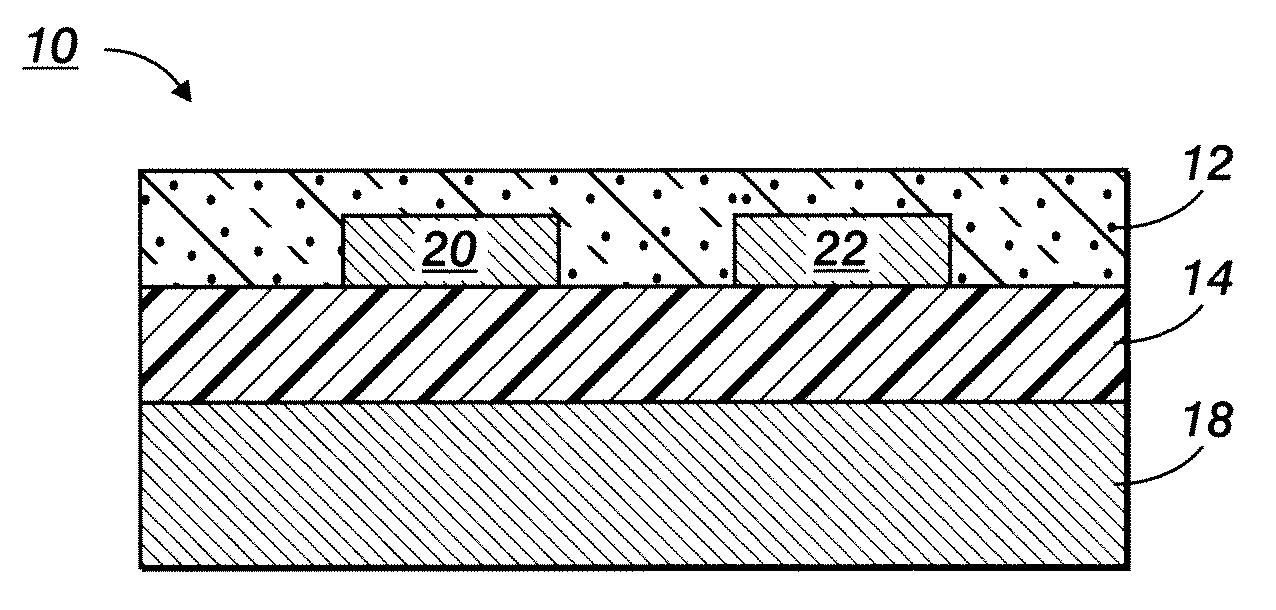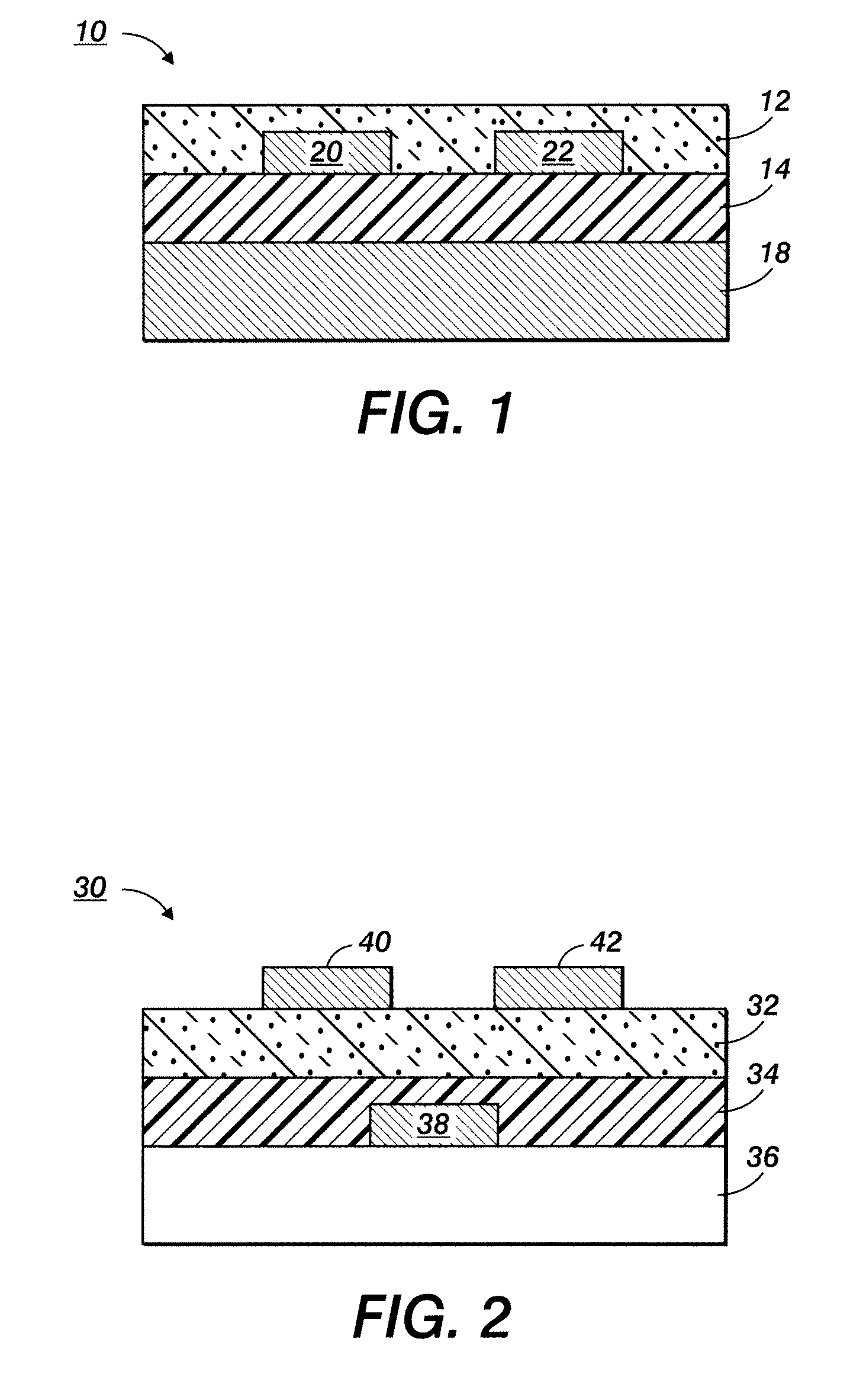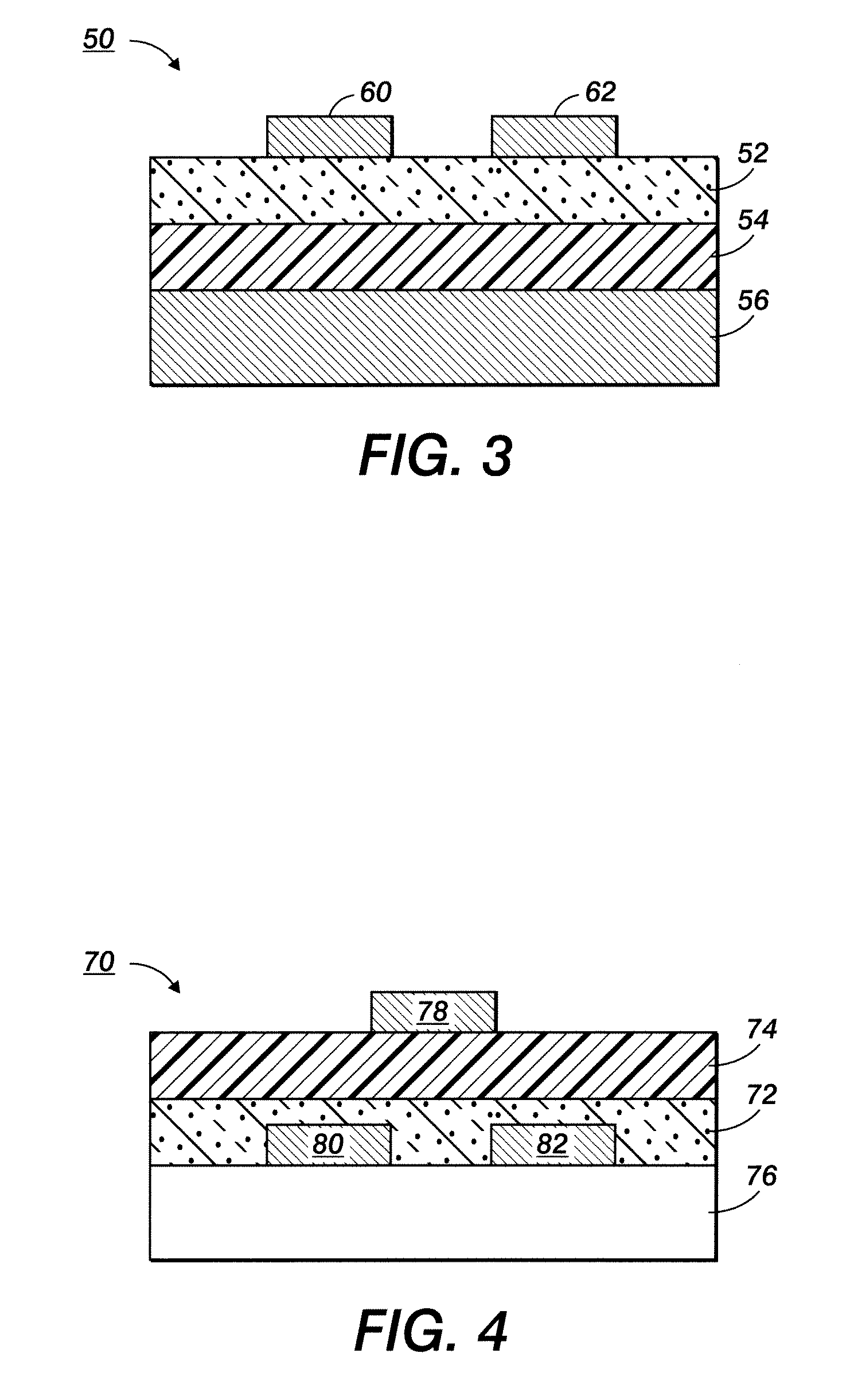Silver nanoparticle compositions
- Summary
- Abstract
- Description
- Claims
- Application Information
AI Technical Summary
Benefits of technology
Problems solved by technology
Method used
Image
Examples
example 1
[0080]Two exemplary types of silver-containing nanoparticles were prepared.
[0081]1A) Synthesis of Hexadecylamine-Stabilized Silver Nanoparticles
[0082]Silver acetate (1.67 g, 10 mmol) and 1-hexadecylamine (6.1 g, 25 mmol) were first dissolved in toluene (20 mL) by heating at 60° C. until silver acetate was dissolved (about 5 minutes). To this solution was added a solution of phenylhydrazine (0.59 g, 5.5 mmol) in toluene (10 mL) with stirring over a period of 5 minutes. The resulting reaction mixture was stirred at 60° C. for another 30 min before cooling down to room temperature. The mixture was added to a stirring methanol / acetone mixture (100 mL / 100 mL) to precipitate the silver nanoparticle product, which was filtered, washed with a mixture of methanol / acetone (1:1, w / w) (3×50 mL), and then air-dried, providing hexadecylamine-stabilized silver nanoparticle product as a grey solid which was used directly in Example 2. Yield: 1.20 g (˜99% yield based on silver content of 90 wt % as ...
example 2
[0085]Two exemplary types of silver-containing nanoparticle compositions were prepared.
[0086]2A)
[0087]To a solution of hexadecylamine-stabilized silver nanoparticles (0.61 g, 5 mmol of Ag) in toluene (20 mL) was added a solution of undecylenic acid (0.184 g, 1 mmol) in 5 mL of toluene (i.e. ratio of acid:silver=0.2). The solution was stirred for 15 minutes at room temperature, and then the solvent was removed in vacuo (at 40° C.) to obtain a concentrated solution (4.0 g, 12.5 mmol Ag / g), which was filtered using a 0.2 micron PTEFT or glass filter.
[0088]2B)
[0089]To a solution of hexadecylamine-stabilized silver nanoparticles (0.61 g, 5 mmol of Ag) in toluene (20 mL) was added a solution of 1-decanoic acid (0.17 g, 1 mmol) in 5 mL of toluene (i.e. ratio of acid:silver=0.2). The solution was stirred for 15 minutes at room temperature, and then the solvent was removed in vacuo (at 40° C.) to obtain a concentrated solution (4.0 g, 12.5 mmol Ag / g), which was filtered using a 0.2 micron PT...
example 3
[0094]The four compositions of Example 2 were used to form a thin film of carboxylic acid-stabilized silver nanoparticles.
[0095]A solution from Example 2 was spin-coated on a glass substrate at a speed of 1000 rpm for 120 seconds. The substrate with a shiny layer of dark brown silver nanoparticles was heated on a hotplate at 180° C. for 45 minutes in air. A shiny silver thin film was then obtained. The thickness of silver thin film s is about 100 nm. The conductivity of the thin films was measured using a conventional four-probe technique. The conductivity of the thin films made from carboxylic acid-stabilized silver nanoparticles was 1.7×104 to 3.6×104 S / cm, which is in the same order of magnitude as the conductivity of a vacuum-deposited silver thin film (the control). See Table 1.
TABLE 1Silver Nanoparticle CompositionSolubilityConductivity (S / cm)2AVery good36,0002BVery good17,0002CVery good23,0002DVery good30,000Vacuum deposited AgN / A39,000
[0096]The compositions of Example 2 were...
PUM
| Property | Measurement | Unit |
|---|---|---|
| Temperature | aaaaa | aaaaa |
| Temperature | aaaaa | aaaaa |
| Temperature | aaaaa | aaaaa |
Abstract
Description
Claims
Application Information
 Login to View More
Login to View More - Generate Ideas
- Intellectual Property
- Life Sciences
- Materials
- Tech Scout
- Unparalleled Data Quality
- Higher Quality Content
- 60% Fewer Hallucinations
Browse by: Latest US Patents, China's latest patents, Technical Efficacy Thesaurus, Application Domain, Technology Topic, Popular Technical Reports.
© 2025 PatSnap. All rights reserved.Legal|Privacy policy|Modern Slavery Act Transparency Statement|Sitemap|About US| Contact US: help@patsnap.com



